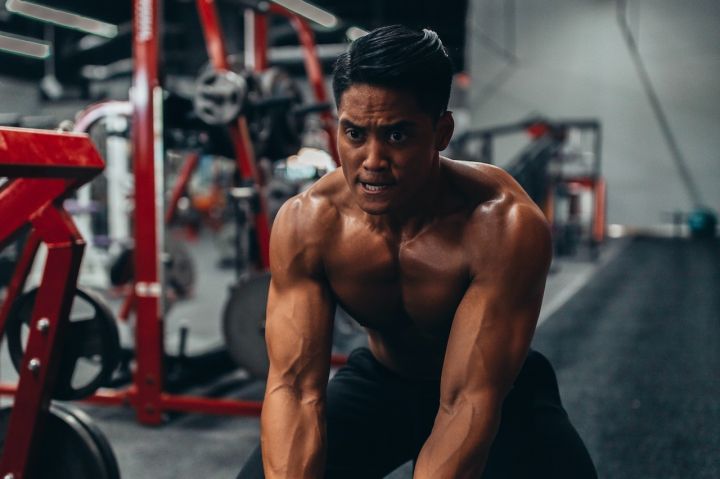Are you currently losing weight or gaining muscle? How would you organise your diet?
Compare yourself to your target, who may be a world class fitness expert or a movement star, and you will find that you have a big gap between you and him, and that you are full of weaknesses.
There is nothing to fear in having weaknesses, but if you know how to train, you can get closer to your target! How can you build thick pecs like the best? Even in the average gym gym, try a special way, a unique chest move that you may not have used yet, and you'll see a big difference in your training!

pectoral training plan
exercise movement number of sets number of reps
butterfly machine chest clamps 5 12-15
dumbbell floor flyes 5 12-15
smith machine floor press 5 10-12
decline machine chest press 5 10-12
upper incline rope chest press 5 12-15

1. Butterfly machine chest press
when doing the butterfly machine chest clamps, ensure that you maintain a unified elbow position throughout the range of motion and focus on pulling both handles towards the middle so that it almost touches. Clamp and hold this position for 1 to 3 seconds to increase the time the muscles are under tension as well as metabolic stress.
Increasing the time under tension is another way to do progressive overload in addition to increasing the load.

in addition to increasing the work done by the pecs, the chest feels a violent burn up, attributed to the squeeze lengthening at the highest point of each movement. Sink to lock the scapulae to keep the force being generated by the pecs and not the shoulders.

2. Dumbbell floor flyes
the dumbbell floor fly is one of the many pectoral training staples to train the main function of the pectoral muscles, shoulder inversion - bringing the arms closer to the midline of the body.
Typically, the dumbbell fly is performed on a flat or more upwardly inclined flat bench. However, traditional dumbbell flyes can place significant stress on the shoulder joint, especially during the centrifugal phase when the arms move below the torso.

the advantage of dumbbell floor flies is that the floor prevents the arms from going far below the torso, helping to avoid any unnecessary stress on the shoulder joint.
Do not choose dumbbells that are too heavy to help reduce potential stress on the shoulders and also focus on squeezing the pectoral muscles. During exercise, lie on a mat so that the torso is a few centimetres above the floor so that the arms make a few extra centimetres of displacement during the exercise. If you don't have a square thick mat, you can use a foam roller or do this movement directly on the floor.

for this movement, as for the next one (smith machine machine floor press), make a pause, pausing for a second or two at the lowest point of each movement to allow the muscles to relax temporarily. This is done to force the production of as much instantaneous energy as possible without the pullback reflex.
3. Smith machine floor bench press
again use a thick mat placed on the floor in this movement, this enables a slight upward incline of the body and helps to emphasise the upper pectoral muscles.

similar to the dumbbell floor fly, pausing in each movement removes the pull reflex and transfers maximum strength to the barbell to lift the deadlift. Due to the addition of this pause and release technique to the movement, the weight used may not be as heavy as using the usual bench press.
When performing the floor press, ensure that you tighten your body before starting the next movement. Lift your chest to keep your upper body stable and under control as you push up and down. Don't let your pecs slacken as you push up. This can be avoided by resting your shoulders firmly on the mat.

4. Downward sloping apparatus chest press
the downward sloping apparatus chest press helps to get the outer pectoral muscles that are leaning down moving. As with all pectoral movements, ensure that the shoulders are tightened down and do not allow the pecs to slacken at the highest point of each movement.

if such equipment is not available, you can do a traditional downward incline bench press, or weighted double bar arm curls.
5. Upper incline rope push-up
to finish off a large pec programme, choose an upward incline rope bench press. The steeper upward incline helps to emphasise the upper pecs and anterior deltoids.

doing the movements slowly and in a controlled manner each time helps to increase the time the muscles are under tension, increase metabolic stress, as well as strengthen the brain-muscle connection.
If you don't have a dedicated rope apparatus, you can carry an upward incline bench to the middle of the gantry to do this movement as well.

if you don't have an upper incline bench, you can also do this movement standing up by simply attaching the handle to the lowest position of the rope and doing a rope chest pinch or push from low to high.

don't neglect your grasp of the movements, especially in a gateway muscle like the pecs. Spend effective time on good training moves for good pecs!

